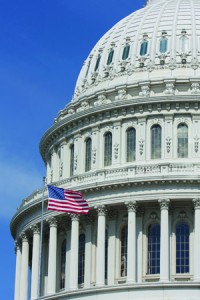 By Steve Brawner
By Steve Brawner
© 2017 by Steve Brawner Communications, Inc.
Should welfare recipients be required to pay back the state if they win the lottery? Maybe the better question is, should all of us?
Those questions came to mind after hearing a presentation by Rep. John Payton, R-Wilburn, of his House Bill 1825 before the House Rules Committee at the State Capitol Wednesday.
The bill would require lottery winners to reimburse the state for their last 10 years of Department of Human Services benefits, such as the Supplemental Nutrition Assistance Program, formerly the food stamp program.
Payton said the lottery is a bad deal for poor people, who gamble their sparse dollars with the odds stacked mightily against them. This arrangement would make them think twice about doing that and remind them that their benefits come from the taxpayers.
In addition to Payton, the bill has 26 co-sponsors in the House, but it’s likely not going far. One committee member requested a fiscal impact statement, which will delay the bill’s progress. Legislators are hoping to go home at the end of March, which is fast approaching.
Still, if part of the idea is to make welfare recipients consider the source of their government benefits, then let’s consider the bigger picture: As a nation, we are all receiving government freebies.
In 2017, the Congressional Budget Office projects the United States government will spend $4 trillion but collect only $3.4 trillion, producing a deficit of $559 billion. That means the government is spending about $1,700 more than it collects per American, or almost $7,000 for a family of four.
Think you don’t benefit from that? Of that $4 trillion, almost a fourth went to Social Security in 2016, which benefits all of us – recipients directly, future recipients because it offers a guaranteed retirement plan, and families because they expend fewer resources taking care of their elderly relatives. (Yes, there’s a trust fund – but not really. In effect, the tax dollars go into one pot.) Another $588 billion goes to Medicare, which offers the same benefits. About that same amount pays for the United States to maintain by far the largest military in the world, which we’re all generally glad we have even if some of us would be OK with it being a little smaller.
Need more examples? The interstates on which we drive are no longer funded entirely by the gas taxes we pay at the pump. They are now funded partly out of the indebted general fund. The public schools we attend at a cost of $9,400 per Arkansas student annually also are funded partly by federal dollars and therefore by federal debt. And contrary to popular belief, only 1 percent of the budget goes to foreign aid, which often directly benefits Americans (for example, by buying food produced in America).
Finally, and this is really important, deficit spending does more than just allow these popular programs to continue. It infuses the economy with extra cash borrowed from future generations without their permission – stolen, in other words. We all live better because the government is writing $559 billion in hot checks this year, and putting it into the economy. Modern American life is being propped up by our grandchildren’s labor.
The frustration that many Americans feel toward welfare recipients is based on their belief that they are receiving unearned benefits that trap them in a cycle of poverty. And yet as a nation we are all receiving unearned benefits that trap us in a cycle of debt. These habits enable us to buy prosperity and security we have not fully earned. We’re all welfare queens, which is why the national debt – the accumulation of all these annual deficits – has reached $19.9 trillion, or more than $61,000 for every American. Most of that has accumulated in the last 16 years, meaning we were the ones who benefitted most.
There will come a point when the nation either chooses a different path, or is forced to do so. At some point in the future, the bill will come due. It always does.
If you and I are not around, then congratulations to us. We lived in a rich country during a rich era, and we received a lot of government benefits we never had to pay for.
In other words, we already won the lottery.


